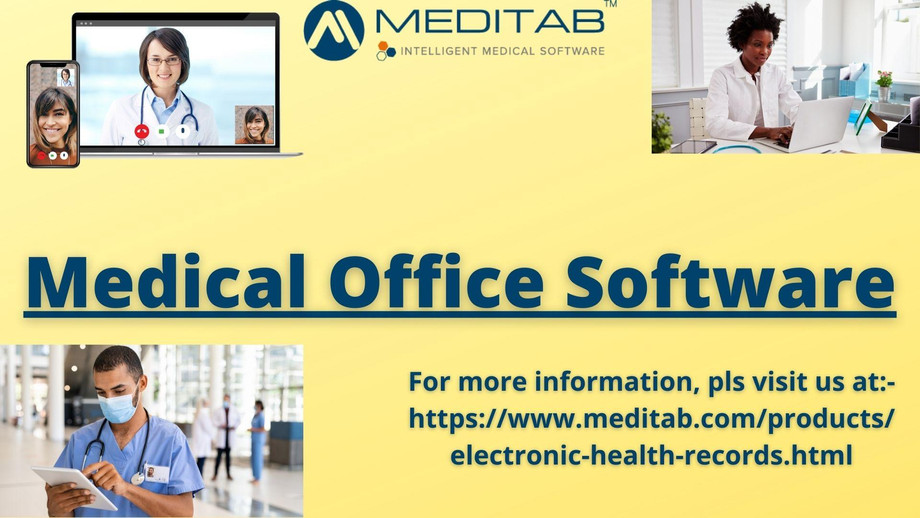As more insurance companies begin to cover telemedicine visits, more patients and healthcare providers are foregoing in-office visits in favor of virtual consultations. Even after the Coronavirus pandemic, more healthcare providers will continue to offer telehealth as an option, implying that patients will have their own thoughts on the subject. Telemedicine satisfaction surveys are critical for understanding and improving the provider-patient relationship, especially as healthcare technology evolves. In this blog post, Meditab will explain the top ten questions that healthcare organizations should ask when surveying patients about their telemedicine solution experience.
The Following Telemedicine Survey Questions Should Be Considered By Every Healthcare Organization
What made you decide to use telemedicine for your most recent visit?
This is an important question for healthcare practices to ask when deciding when to offer telemedicine visits. Your healthcare team will be able to better understand the important factors in the patient decision-making process based on the answer options. Some examples of possible answers include:-
- Type of visit (i.e., sick or well-check).
- Health/safety (i.e., immunocompromised) (i.e., immunocompromised).
- Location and proximity to the office.
- Time is money.
- Visit frequency (i.e., monthly check-in).
Would you suggest telemedicine to a family member or a friend?
Net Promoter Score (NPS) is a common market research question type that should undoubtedly be used in healthcare. NPS is a great way to gauge how your patients feel about how your practice uses telemedicine. Furthermore, NPS is a great indicator of growth, which means that if your patients are promoters (score 9 or 10) rather than passives (score 7 or 8) and detractors (score 0 to 6), your healthcare practice may be able to interpret and meet the need for telemedicine rather than in-office visits.
Overall, how would you rate your most recent telemedicine experience?
This question allows healthcare providers to see telemedicine from the patients' point of view. Allowing patients to rate their most recent telemedicine experience provides valuable insight into how patients perceive telemedicine in general.
How likely is it that you will use telemedicine for your next appointment?
This question, like NPS, provides valuable insight into the patient decision-making process. By asking patients if they would use telehealth again for their next appointment, your practice can determine if patients are enjoying the telemedicine solution and want to continue using it. This question also helps healthcare professionals understand the demand for virtual visits versus in-office visits.
Were you seen within the first 15 minutes of your appointment time?
In order to understand how wait times affect patient satisfaction, patients who use telemedicine should inquire about the length of time spent in the virtual waiting room. This question can assist healthcare practitioners in balancing thorough, quality care with shorter wait times. In-person, regardless of how frustrated they are, a long wait time is usually expected. For remote appointments, however, there is a greater expectation that their consultation will begin on time. It's treated like a Zoom meeting, where being late to a client call would be extremely unprofessional.
How would you rate the amount of time spent with you by your healthcare provider?
Patients who use telemedicine want to believe they are receiving the same level of care they would receive in a doctor's office. It is critical that their health concerns are addressed. Because consultations are conducted virtually, the patient must provide detailed responses to your in-depth questions. In order to improve and maintain high quality healthcare while using telehealth, it is critical to ask patients if they believe their healthcare provider spent enough time with them. If the survey results show that the consultation was too short or that they felt rushed, this could be an indication that you should plan for longer appointment times.
Was your privacy respected during your telemedicine visit? What is your reasoning?
If your healthcare provider has mentioned HIPAA in nearly every telehealth visit you've had so far. If your doctor tells you where they are, who is nearby, and that those nearby may be able to hear our conversation. Inquiring about patients' feelings about their privacy being respected during their virtual appointment can help patients feel more at ease using telemedicine and discussing their health via video chat. This question also aids in identifying areas for improvement in terms of patient privacy and security. Your patients' access to healthcare is facilitated by the IMS patient portal and care portal. Your patients can always stay connected and informed with 24/7 secure access to their clinical information, while you save time and valuable resources.
How satisfied were you with the thoroughness of your provider's care while using telemedicine?
One of the most important questions to ask patients is whether they are satisfied with their healthcare provider's thoroughness when using telemedicine. Talking to a healthcare provider over the phone, for example, is a completely different experience than visiting the office. There are some limitations to telehealth, and this question is critical to identifying and addressing those limitations.
Did you encounter any technical issues while using telemedicine? If so, please elaborate.
There are many factors that are beyond your control as a medical practice management when using telemedicine. In order to improve the patient experience, it is critical to ask patients about any difficulties they encountered while using telemedicine. Inquiring about technical problems encountered can help identify problems early on. The technical challenges revealed by such a question may reveal opportunities for your healthcare practice, such as providing more clear login and usage instructions or switching medical office software providers.
Did your healthcare provider provide you with simple instructions?
It's simple to print out a diagnosis and send a patient on their way to the pharmacy when they come in for an in-office appointment. Telemedicine solution, on the other hand, lacks the in-person component, which leaves room for patient confusion. This question is critical in understanding how to best meet the needs of patients so they know what to do next. A good follow-up question to this one would be what the patient's communication preferences are so that they can send their diagnosis and treatment information in the most convenient way for the patient.
Don't let the difficulty of third-party integration prevent you from providing remote care. Televisit, an IMS-integrated, HIPAA-compliant telemedicine platform, allows you to see your patients wherever you are. For more information contact Meditab now!


